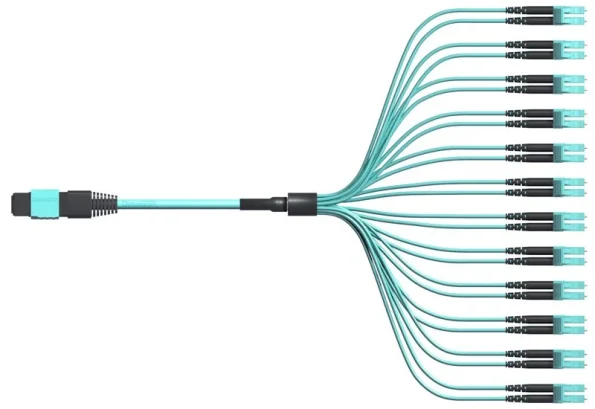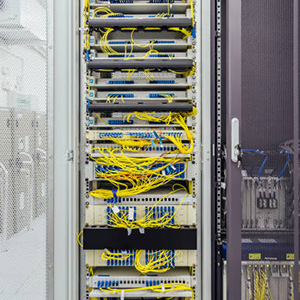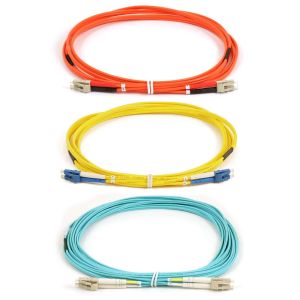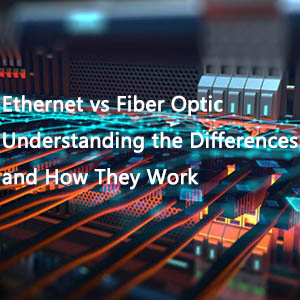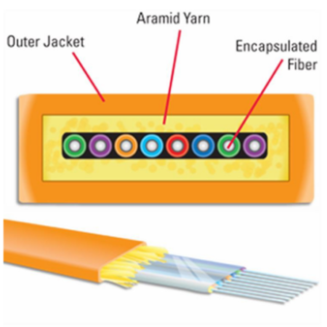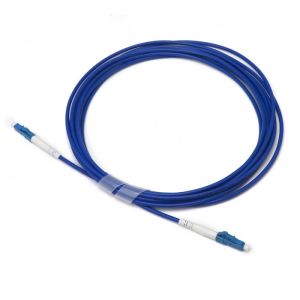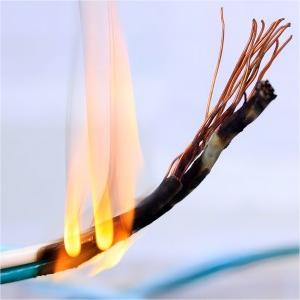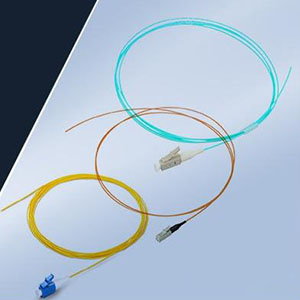24-core MTP/MPO cabling represents an innovative, high-density wiring solution leveraging 24-core MTP/MPO cables. Offering a more compact and efficient alternative to traditional fiber cabling methods, this solution provides superior density, streamlining cable management and enhancing spatial efficiency.
24-core MTP/MPO cabling is an advanced solution that stands out for its ability to support higher connection densities compared to the conventional 24-fiber MPO/MTP cabling, which necessitates the use of either three sets of 8-fiber MTP/MPO cables or two sets of 12-fiber variants. This document outlines four exemplary 24-fiber MTP/MPO cabling solutions, each tailored to address specific network infrastructure needs and optimize performance in 40G/100G environments
24-Fiber MPO/MTP Cabling in 40G/100G Network Solutions:
The 24-fiber MPO/MTP cabling offers distinct advantages over traditional single-core or dual-core optical fiber cabling. While the duplex LC connector occupies the same space as a single MTP connector, the latter can support 24 cores, significantly increasing connection density. As networks evolve from 10Gbps to 40G or 100G, the 24-fiber MTP/MPO structured cabling becomes indispensable for supporting advanced applications such as AR and VR.
Solution 1: 24-Fiber MTP/MPO Cable Based Cross Connection
Illustrated in the accompanying diagram, the 24-core MTP/MPO fiber jumper seamlessly transitions from a 24-fiber configuration to a dual-core setup through the employment of a 24-core MTP-LC fiber distribution module. This adaptability exemplifies the scalability of this cabling approach, achieving a port density three times greater than that of 8-core MTP fiber optic patch cords.
Solution 2: LC Fiber Patch Cord Based Cross Connection
Divergent from the traditional MTP/MPO cross-connection methodology, this solution adeptly accommodates scenarios where 24-core MTP/MPO fiber jumpers are scarce. Ingeniously employing a pair of such jumpers in conjunction with an MTP/MPO-LC optical fiber distribution apparatus, this deployment bolsters network adaptability and enables dual optical fiber and parallel multi-fiber connections.
Solution 3: Adoption with MTP/MPO Branch Cables
In contrast to Solution 1, this approach replaces the MTP/MPO-LC fiber distribution box and LC fiber optic patch cord combination with an MTP/MPO branch fiber optic patch cord and MTP/MPO fiber adapter panel. This innovation significantly increases panel connection density, with an 8-port 24-core MTP/MPO optical fiber adapter panel supporting up to 192-core optical fibers.
Solution 4: MTP/MTP Trunk Cables Parallel Connection
Supporting a broader range of parallel applications, 24-fiber MTP/MPO cabling can facilitate 100G SR-10 applications with only ten pairs of 10x10G configuration multi-mode fiber. This solution can also be configured for 120G applications, with 120G ports established as 12 independent 10G links or 3 40G links, offering the simplest and most direct connection method.
In Conclusion:
Anchored by the robust 24-core MTP/MPO cable connections, this cabling strategy emerges as the quintessential cost-effective solution for the deployment of both parallel and duplex fiber applications. It promises a future-proof infrastructure that caters to evolving bandwidth demands, providing higher density and effectively reducing the time required for cleaning and inspection during MTP system installation.

